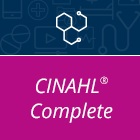Nursing & Health Sciences Research Journal
Abstract
Background: As the global elderly population grows rapidly, end-of-life care (EOLC) needs have expanded, warranting comprehensive nursing education. There is a significant gap in exposure to EOLC during nursing undergraduate education, clinical experiences, and training opportunities in the professional setting. The purpose of this quality improvement project was to educate nurses about end-of-life care. Methods: In an established medical-surgical unit, hospice patients with comfort-only measures were placed into a cohort labeled Transitional Care Unit (TCU). Between October 2023 and May 2024, nurses working in the TCU were surveyed on their knowledge regarding EOLC. Staff attended mandatory education sessions after the initial survey. Pre and post-intervention data were compared. Results: The majority of participants (59%) were between ages 20 and 34. Most nurses (62%) were BSN-prepared with 0–5 years of acute care experience (77%). There was a significant increase in scores among nurses on questions related to symptom management and feelings regarding EOLC. The participants reported that more education is required in this area. The post-test scores showed that the nurses’ confidence in providing EOLC for patients increased from 72% pre-intervention to 78%. Conclusion: It is essential to bridge the gap between nursing school education and the needs of EOLC. Making education available in diverse ways, such as online modules, pamphlets, and live educational sessions, enhances nurses’ knowledge of EOLC. This project showed that although nurses have experience in other areas, they still require specialized training and education in EOLC.
Recommended Citation
Villalba, M., Angel, A., & Singh, A. (2024). Addressing End-of-Life Care Education Gaps for Registered Nurses: A Quality Improvement Project. Nursing & Health Sciences Research Journal, 7(1), 105-112. https://doi.org/10.55481/2578-3750.1193
Creative Commons License

This work is licensed under a Creative Commons Attribution-NonCommercial-No Derivative Works 4.0 International License.



